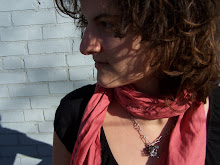From
http://www.homedesignfind.com/diy/how-to-build-a-home-that-needs-no-heat/#more-3990How To Build a Home That Needs No Heat
This house itself acts as a heat pump because an air flow and access channel, or envelope, runs around the building, just inside the walls - creating a miniature biosphere. Solar heated air circulates boosting geothermal energy from beneath the house, storing it in the massive wood walls.
There are 4 principles to make this work:
1. BUILD WITH SOLID WOOD FOR THERMAL INERTIA
Buildings made of solid wood are the most energy efficient. This is attributed to “thermal inertia,” a phenomenon where the solid wood walls store energy during the day, and release it during the night. Thermal inertia causes these houses to time shift heat between the cycles of night and day, and even between the seasons.
2. CIRCULATE AIR WITHIN AN ENVELOPE
The house is designed to float inside an envelope within the outer skin, which is a buffer zone to noise, wind, and outside pollution. The air path, or envelope, just inside the structure’s solid wood skin acts as a continuously recharging convection loop.
The air envelope creates a miniature biosphere, oxygenated by plants, acting as a fresh air-to-air exchanger with walls that breathe.
In summer, the envelope is opened to the outside for summer cooling - basement windows for intake, rooftop windows for exhaust. Natural ventilation carries off internal heat captured by the massive walls during the day.
3. MAKE THE HOUSE ACT LIKE A GEOTHERMAL HEAT PUMP
The house itself acts as a heat pump, using the natural energy of rising solar-heated air to extract and enhance the pool of geothermal energy just beneath the building’s floor.
The geothermal loop connection with the earth gives the benefits of an underground house in an above-ground structure. Just below the surface, within reach of the average basement, is an infinite reservoir of heat that never drops below 50 degrees F.Underground Stability.
4. TIME SHIFT TEMPERATURES FOR EVEN WARMTH
The house works because the walls have the ability to gain, hold, and release heat. Their thermal mass and thermal lag causes them to be able to time shift temperatures; where stored daytime energy cancels out night-time need.
That’s it.
Some of these ideas are not new. Some medieval Scandinavian wooden houses built using these principles still warm their twenty-first century occupants sustainably six centuries after those trees were first cut down to build them.
Via
Enertia® Homes
 And when I thought that this day was as beautiful as can be, another marvelous thing was pointed out to me! Straight ahead of our view the full moon rising in the sky, and the sun slowly setting, equally balanced in the sky.
And when I thought that this day was as beautiful as can be, another marvelous thing was pointed out to me! Straight ahead of our view the full moon rising in the sky, and the sun slowly setting, equally balanced in the sky. 



